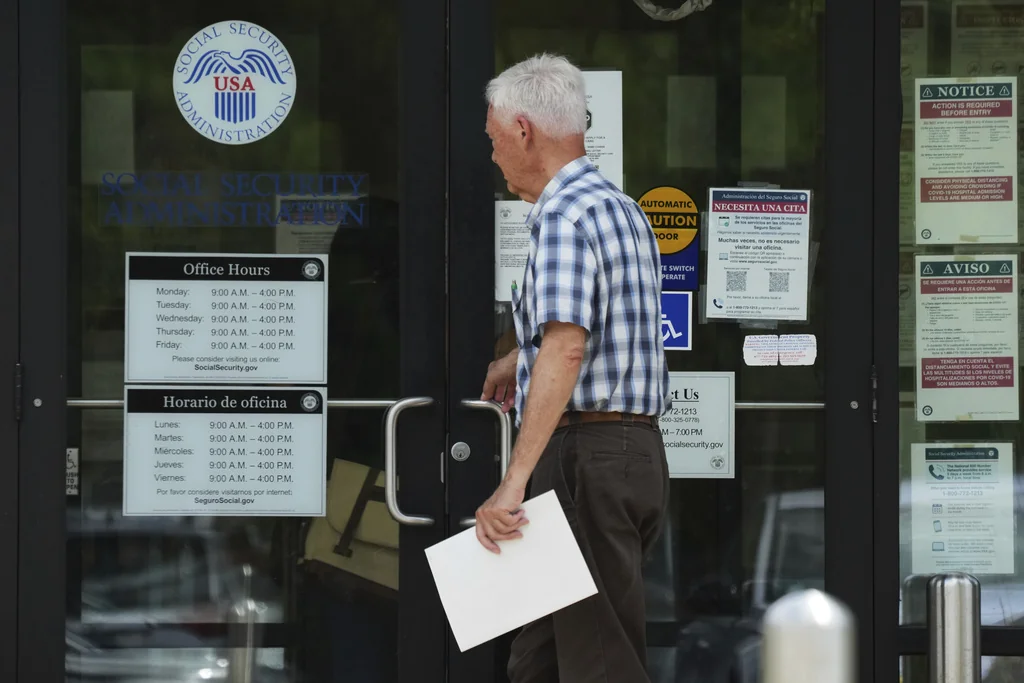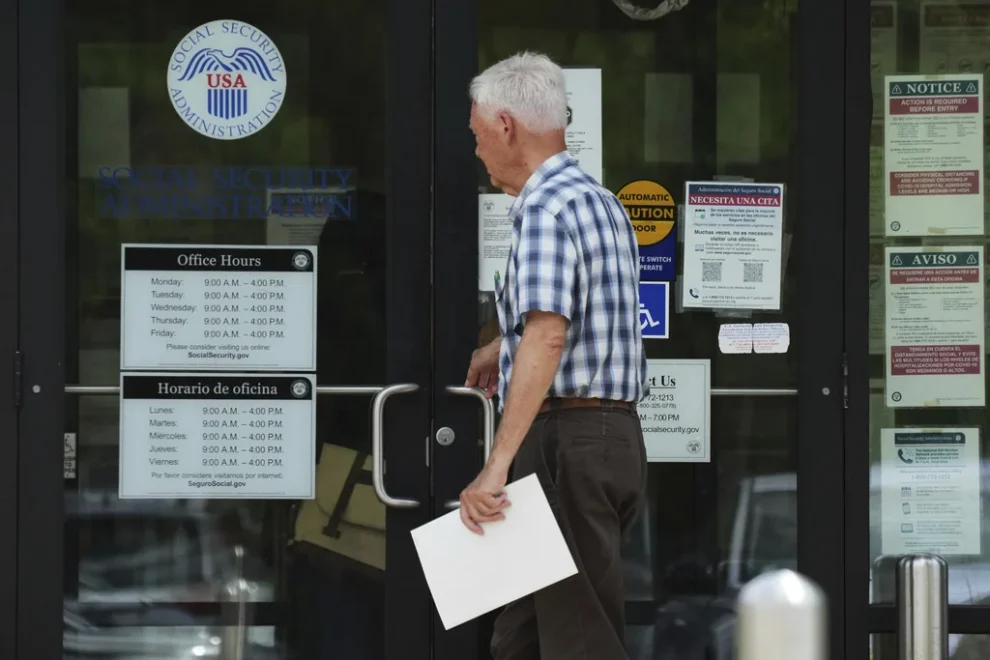President Franklin D. Roosevelt’s Social Security Act of 1935 turned 90 on Thursday, but the landmark program will require an act of Congress if it’s to last until its 100th birthday and beyond without significant benefit cuts to nearly 75 million beneficiaries.
Estimates show Social Security’s insolvency could cause benefit reductions as soon as 2032. At that point, the program, which primarily aids retired workers, will be forced to slash payouts by up to 25%, or nearly $14,000 annually for middle-income individuals.
Still, Congress has no fix in sight despite dozens of proposals offered by lawmakers from both sides of the aisle each year. There’s no substantive effort to avert the funding cliff, and the political appetite for a bipartisan compromise remains elusive for the foreseeable future. The Senate will require bipartisanship to overcome the 60-vote filibuster, no matter which party is in power.
A long-standing third rail of American politics, Presidents Donald Trump and Joe Biden resisted major modifications while vowing to preserve current benefits. The last significant change was more than 40 years ago, when Congress, months away from insolvency in 1983, hiked the full retirement age from 65 to 67.
Washington works best on deadlines. However, deadlines that are still years away enable lawmakers to retreat behind partisan talking points without taking concrete steps toward possible solutions.
“In addition to celebrating and working to expand Social Security, it’s imperative that we also protect and defend it,” said Nancy Altman, president of the advocacy group Social Security Works and a critic of Trump. “I have never been so concerned Donald Trump and his administration are undermining everything.”
As part of the president’s broader reduction of the overall federal workforce, the Trump administration’s 7,000 personnel cuts to the Social Security Administration, or about 12% of its employees, have exacerbated advocate concerns about the program’s long-term success. They’ve led to closed field offices and complaints of longer wait times for benefit claims, processing backlogs, and fewer services readily available for recipients.
In a recent statement, Commissioner of Social Security Frank Bisignano called on Congress and the Administration to work together to protect and strengthen the program for the future.
“To ensure we serve the public and deliver high-quality service to the 185 million people who work and pay payroll taxes for Social Security and the 70 million beneficiaries who will receive benefits during 2025, the financial status of the trust funds remains a top priority for the Trump administration,” Bisignano said.
Everyone has a plan. But no one can seem to agree.
Every lawmaker, advocacy group, and political consultant seems to have what they say is the golden ticket to securing Social Security’s long-term viability. But virtually the only thing agreed upon is that the Great Depression-era program is headed for bankruptcy.
There’s no shortage of proposals, from raising the retirement age again and adjusting the benefit formula to lifting the wage tax cap and increasing the payroll tax rate. Some even advocate that the government-run entitlement should be privatized.
Social Security’s worsening financial outlook is attributed to an aging population, lower birth rates, increased life expectancy, recent laws that change taxes and qualifying beneficiaries, and the payroll tax cap for salaries not keeping pace with increased wages.
Republicans often cite tackling waste, fraud, and abuse as a solution to Social Security’s insolvency. Trump and administration officials have claimed without proof that there are tens of millions of dead people over 100 years old still receiving benefits and bleeding the program dry.
Senate Majority Leader John Thune (R-SD) is among those who’ve previously suggested raising the retirement age further and floated the creation of a bipartisan task force to develop recommendations. The full-benefit retirement age varies based on birth year. The current maximum is 67 for those born in 1960 or later.

Sen. Rick Scott (R-FL) expressed optimism about averting bankruptcy, even as he said “it doesn’t appear to a lot of people that it’s imminent, which, in my mind, it is.” Scott was the subject of bipartisan criticism in recent years for proposing that Social Security be reauthorized every five years, but has since pushed legislation to prohibit funding cuts.
“I think the big thing is, it’s going to take everybody getting back to work…that could be paying into the program,” Scott told the Washington Examiner. “I think we’ve got to look at where we can make sure there’s no fraud and waste in the program first.”
Treasury Secretary Scott Bessent has envisioned Social Security transitioning to a private model, which Democrats say would lead to the program’s demise. The Trump Cabinet member described the newly-created $1,000 Trump Accounts provided by the federal government for newborns as a “backdoor for privatizing Social Security.”
“In the 80s and the 90s and the early 2000s, it’s always been a problem,” Rep. John McGuire (R-VA) told the Washington Examiner of the program’s solvency. “If the government was a business, it would be out of business, because if you spend more than you make, it just doesn’t work, does it?”
Democrats frequently point to proposals such as lifting the payroll tax cap, currently at around $176,000 for individuals annually; increasing the payroll tax rate from 12.4% to 12.6%, which is split between employers and employees; and limiting or outright eliminating benefits for the ultra-wealthy.
“We have got to expand Social Security and extend insolvency, and the way to do that, clearly… is to lift the cap on taxable income so that the wealthiest Americans start paying their fair share of taxes,” Sen. Bernie Sanders (I-VT) told reporters during a press call Wednesday with Social Security Works. “Right now, as we all know, a billionaire pays the same amount in the Social Security Trust Fund as somebody who makes $176,000 a year.”
Rep. John Larson (D-CT) criticized raising the retirement age, as lawmakers did in 1983, saying it was “in essence actually cutting the program.”
Lawmakers and presidents have not only failed to bolster Social Security’s long-term survival, but they’ve also recently enacted laws that analysts say further shorten its solvency.
SOCIAL SECURITY BENEFITS TO BE CUT BY 24% OVER NEXT SEVEN YEARS: FISCAL WATCHDOG
Trump’s One Big Beautiful Bill Act, signed into law in July, includes additional cuts on taxable income that the nonpartisan fiscal watchdog Committee for a Responsible Federal Budget estimates would increase a possible benefit cut by roughly 0.5%. The Social Security Administration’s chief actuary determined the law will cost Social Security nearly $169 billion through 2034.
The bipartisan Social Security Fairness Act, signed into law in January, increased benefits for primarily public sector workers such as teachers, police, and federal employees with pensions not covered by Social Security. The law eliminated the Windfall Elimination Provision and Government Pension Offset.
























